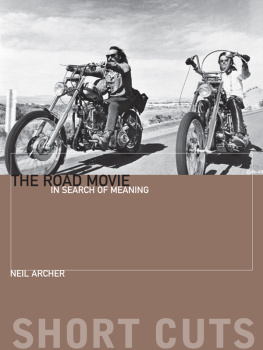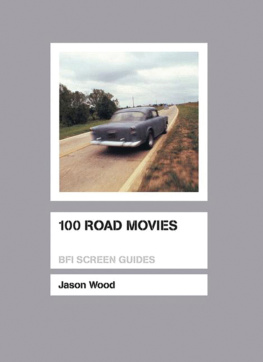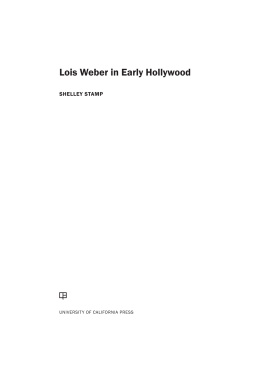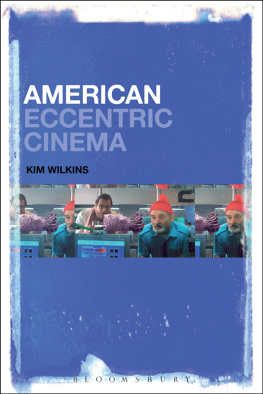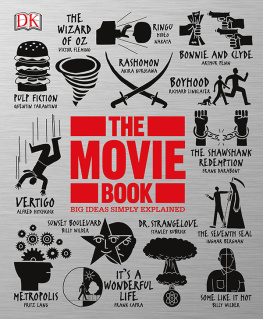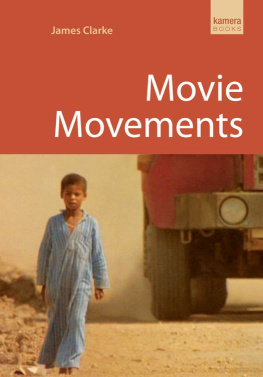Table of Contents
SHORT CUTS
INTRODUCTIONS TO FILM STUDIES
OTHER SELECT TITLES IN THE SHORT CUTS SERIES
THE HORROR GENRE: FROM BEELZEBUB TO BLAIR WITCH Paul Wells
THE STAR SYSTEM: HOLLYWOODS PRODUCTION OF POPULAR IDENTITIES Paul McDonald
SCIENCE FICTION CINEMA: FROM OUTERSPACE TO CYBERSPACE Geoff King and Tanya Krzywinska
EARLY SOVIET CINEMA: INNOVATION, IDEOLOGY AND PROPAGANDA David Gillespie
READING HOLLYWOOD: SPACES AND MEANINGS IN AMERICAN FILM Deborah Thomas
DISASTER MOVIES: THE CINEMA OF CATASTROPHE Stephen Keane
THE WESTERN GENRE: FROM LORDSBURG TO BIG WHISKEY John Saunders
PSYCHOANALYSIS AND CINEMA: THE PLAY OF SHADOWS Vicky Lebeau
COSTUME AND CINEMA: DRESS CODES IN POPULAR FILM Sarah Street
MISE-EN-SCNE: FILM STYLE AND INTERPRETATION John Gibbs
NEW CHINESE CINEMA: CHALLENGING REPRESENTATIONS Sheila Cornelius with Ian Haydn Smith
ANIMATION: GENRE AND AUTHORSHIP Paul Wells
WOMENS CINEMA: THE CONTESTED SCREEN Alison Butler
BRITISH SOCIAL REALISM: FROM DOCUMENTARY TO BRIT GRIT Samantha Lay
FILM EDITING: THE ART OF THE EXPRESSIVE Valerie Orpen
AVANT-GARDE FILM: FORMS, THEMES AND PASSIONS Michael OPray
PRODUCTION DESIGN: ARCHITECTS OF THE SCREEN Jane Barnwell
NEW GERMAN CINEMA: IMAGES OF A GENERATION Julia Knight
EARLY CINEMA: FROM FACTORY GATE TO DREAM FACTORY Simon Popple and Joe Kember
MUSIC IN FILM: SOUNDTRACKS AND SYNERGY Pauline Reay
MELODRAMA: GENRE, STYLE, SENSIBILITY John Mercer and Martin Shingler
FEMINIST FILM STUDIES: WRITING THE WOMAN INTO CINEMA Janet McCabe
FILM PERFORMANCE: FROM ACHIEVEMENT TO APPRECIATION Andrew Klevan
NEW DIGITAL CINEMA: REINVENTING THE MOVING IMAGE Holly Willis
THE MUSICAL: RACE, GENDER AND PERFORMANCE Susan Smith
TEEN MOVIES: AMERICAN YOUTH ON SCREEN Timothy Shary
FILM NOIR: FROM BERLIN TO SIN CITY Mark Bould
DOCUMENTARY: THE MARGINS OF REALITY Paul Ward
THE NEW HOLLYWOOD: FROM BONNIE AND CLYDE TO STAR WARS Peter Krmer
ITALIAN NEO-REALISM: REBUILDING THE CINEMATIC CITY Mark Shiel
WAR CINEMA: HOLLYWOOD ON THE FRONT LINE Guy Westwell
FILM GENRE: FROM ICONOGRAPHY TO IDEOLOGY Barry Keith Grant
ROMANTIC COMEDY: BOY MEETS GIRL MEETS GENRE Tamar Jeffers McDonald
SPECTATORSHIP: THE POWER OF LOOKING ON Michele Aaron
SHAKESPEARE ON FILM: SUCH THINGS THAT DREAMS ARE MADE OF Carolyn Jess-Cooke
CRIME FILMS: INVESTIGATING THE SCENE Kirsten Moana Thompson
THE FRENCH NEW WAVE: A NEW LOOK Naomi Greene
CINEMA AND HISTORY: THE TELLING OF STORIES Mike Chopra-Gant
GERMAN EXPRESSIONIST CINEMA: THE WORLD OF LIGHT AND SHADOW Ian Roberts
FILM AND PHILOSOPHY: TAKING MOVIES SERIOUSLY Daniel Shaw
CONTEMPORARY BRITISH CINEMA: FROM HERITAGE TO HORROR James Leggott
RELIGION AND FILM: CINEMA AND THE RE-CREATION OF THE WORLD S. Brent Plate
FANTASY CINEMA: IMPOSSIBLE WORLDS ON SCREEN David Butler
FILM VIOLENCE: HISTORY, IDEOLOGY, GENRE James Kendrick
NEW KOREAN CINEMA: BREAKING THE WAVES Darcy Paquet
FILM AUTHORSHIP: AUTEURS AND OTHER MYTHS C. Paul Sellors
THE VAMPIRE FILM: UNDEAD CINEMA Jeffrey Weinstock
HERITAGE FILM: NATION, GENRE AND REPRESENTATION Beln Vidal
QUEER CINEMA: SCHOOLGIRLS, VAMPIRES AND GAY COWBOYS Barbara Mennel
ACTION MOVIES: THE CINEMA OF STRIKING BACK Harvey OBrien
BOLLYWOOD: GODS, GLAMOUR AND GOSSIP Kush Varia
THE SPORTS FILM: GAMES PEOPLE PLAY Bruce Babington
THE HEIST FILM: STEALING WITH STYLE Daryl Lee
INTERNATIONAL POLITICS AND FILM: SPACE, VISON, POWER Sean Carter & Klaus Dodds
FILM THEORY: CREATING A CINEMATIC GRAMMAR Felicity Colman
BIO-PICS: A LIFE IN PICTURES Ellen Cheshire
FILM PROGRAMMING: CURATING FOR CINEMAS, FESTIVALS, ARCHIVES Peter Bosma
POSTMODERNISM AND FILM: RETHINKING HOLLYWOODS AESTHETICS Catherine Constable
THE ROAD MOVIE
IN SEARCH OF MEANING
NEIL ARCHER
A Wallflower Press Book
Wallflower Press is an imprint of
Columbia University Press
Publishers Since 1893
New York, Chichester, West Sussex
cup.columbia.edu
Copyright Columbia University Press 2016
All rights reserved.
E-ISBN 978-0-231-85088-9
Wallflower Press is a registered trademark of Columbia University Press.
Cover image: Easy Rider (1969) Columbia Pictures
A complete CIP record is available from the Library of Congress
ISBN 978-0-231-17647-7 (pbk. : alk. paper)
ISBN 978-0-231-85088-9 (e-book)
A Columbia University Press E-book.
CUP would be pleased to hear about your reading experience with this e-book at .
CONTENTS
My thanks above all to Yoram Allon, Commissioning Editor at Wallflower Press, for taking the time to hear my improvised book proposal for the Short Cuts series one morning in 2014, and then asking me to go ahead and do it. Its been an honour to add my own contribution to this great list.
Thanks also to Luke Hare and family, whose home-from-home on the Putney Delta during the early 1990s impacted on the ideas behind this book, in ways Im only just discovering.
And finally, thanks to those other once and sometime residents of SW15, Giulia and Noa, for most other things. Noas declared pre-school ambition to become a jungle-exploring artist has been no little source of inspiration during this writing period.
Neil Archer
January 2016
Two men on motorcycles cruising the open highway, panoramic vistas expanding around them. An outlaw couple, seen through the windscreen of their open-top convertible, one staring out front with hands clamped to the wheel, the other looking anxiously behind. Or from the reverse angle: the silhouettes of two hot-rodders behind the dashboard, hair trailing in the breeze from the open window, road signs and landscape speeding past their fixed gaze and ours.
All three of these examples are recognisably from the genre we have come to identify as the road movie. If the first does not instantly call to mind any number of moments in Easy Rider (1969), the chances are you have not seen it yet. We might recognise the second from somewhere near the end of Thelma and Louise (1991), while the third is a recurring shot from Two-Lane Blacktop (1971). Saying these are typical images of the road movie, though, begs the question what it is at all that identifies these films as road movies. To say simply that we know a road movie when we see one, as the beginning of this book has in fact invited you to do, suggests a very circular logic in the way we identify and discuss genre.
At the same time, it is important to work out what it is that instantly suggests road movie to our eyes and ears when we watch a film, or conjure up moving images such as the ones described above. But just as importantly, we need to ask what is the point of identifying and naming such a thing. If we are going to explore the road movie as a genre, in other words, we need to work out not just what a road movie is, but what it and the generic terminology around it actually

